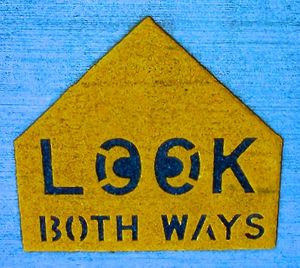By Dr. Ken Broda Bahm:
The advice is as old as the art of communication: Look at the person you are talking to. And it is good advice. Eye contact makes it easier for audiences to stay engaged and more likely that speakers will focus on their targets. For a witness on the stand during trial testimony, that means “Look at the jury.” But not just the jury. A witness who shuts out counsel and fixes their gaze only on the jury is likely to look a little contrived, or even creepy. So the advice is to look at the attorney when she is asking a question, and then look at the jury when delivering your answer. But that advice can create its own problem. If applying it too mechanically, the witness is swaying his head back and forth from counsel to jury to the point that it looks like he is watching a tennis match. Taken too far, the stage direction could look something like this:
[Witness looks at attorney]
“Doctor, where did you go to medical school?”
[Witness looks at jury]
“UCLA“
[Witness looks back at attorney]
To the jury, it seems odd because it doesn’t replicate anything we would ever see in natural communication. “Has he been coached to do that?” they’ll wonder. Instead of the mechanical tennis-watching demeanor, the witness needs to include counsel and jury in a way that is both natural and inclusive. Begin your answer while still looking at the attorney who asked the question, but then, as you give any answer that is a sentence or longer (which should be most answers), naturally shift your attention over to the jury. For longer answers, it is okay to move your attention back to the attorney at times as you answer. As long as your eye contact is sustained and not darting back and forth, it is natural to include both counsel and jury in your field of gaze, just as you would in a three-way conversation with two friends: You would not exclude one to talk to the other, and you wouldn’t mechanically alternate between the two, you would be naturally inclusive of both. This post will share a good way to remember that advice, and also address a few reasons why it can still be a challenge.
The Focusing Analogy: A Cocktail Party Conversation
In understanding and applying this advice, it can help to keep a simple analogy in mind.
You’re at a cocktail party, and at first you’re locked in conversation with one friend. But as you’re talking to and looking at that person, telling a story for example, another friend drifts into your conversation. This new arrival is just listening at this point. So, not wanting to be rude, you are now including the newcomer in your eye contact. You don’t forsake your original conversational partner, though, so you still shift back from time to time.
The attorney is the original conversational partner in that vignette, and the jury is the newcomer. They can’t talk to you — the rules prevent that — but they’re still a critical part of that conversation.
Why Is That So Hard?
Seems like simple advice: Look at both the attorney and the jury, and be natural, conversational, and not mechanical as you do it. But once you’re sitting in that witness chair it can be harder than it sounds. Here are a few reasons for that.
Because the Jury Isn’t Playing Along
The number one reason why it might not feel natural to talk to the jury is because the jury isn’t talking to you. The attorney, on the other hand, has you engaged in a back and forth conversation. That can make it tempting for you to focus on the talking attorney and not on the silent jury. To make matters worse, when you do look at the jury, those faces can be tough to read. Most are trying to be as neutral as possible, but the result can be stone-faced and unpleasant. In that setting, witnesses need to set aside those nonverbals and focus on their own communication, treating the jury as a silent but essential part of a three-way conversation.
Because Opposing Counsel is Trying to Trip You Up
The other side’s lawyer doesn’t really want you to connect with the jury. Instead, the lawyer wants to be the star of the show, making points the witness agrees with, or at least cannot deny. To pull the witness’s attention off the jury, they will ask leading questions that call for a one-word answer, giving you no time to look at the jury, and they might even move away from the jury box in order to make it more difficult for you to swing your eyes back to the jury when answering. In that setting, it is critical to remember that opposing counsel is only one part of a three-party conversation: Your own words are key, and so is the jury’s understanding, so make sure you’re including them.
Because It’s Just Easy to Forget
It is certainly understandable that witnesses would focus more on what they’re going to say rather than on where they’re going to look when they say it. In direct examinations, their attention is likely to be on where their own attorney wants them to go, and in cross-examination, that attention is likely to be on the traps and challenges opposing counsel is laying out. In both cases, it is appropriate for the witness’s attention to be on content. But “content” includes a consideration of audience. Because witnesses should be paying their greatest attention to their answers, the part about where they’re looking needs to be a habit built during practice.
Bottom line: Make it inclusive and make it natural, ignoring neither counsel nor the jury.
______
Other Posts on Witness Nonverbal Communication:
______
Photo credit: Jason Taellious, Flickr Creative Commons
